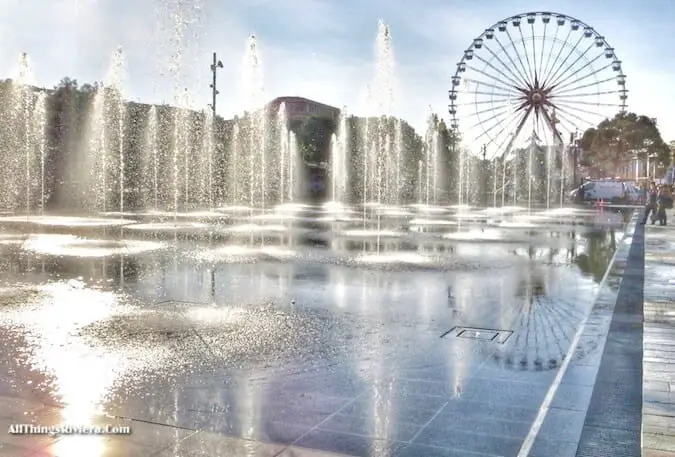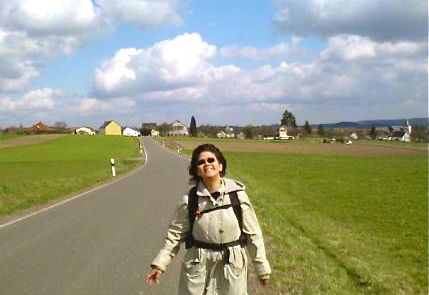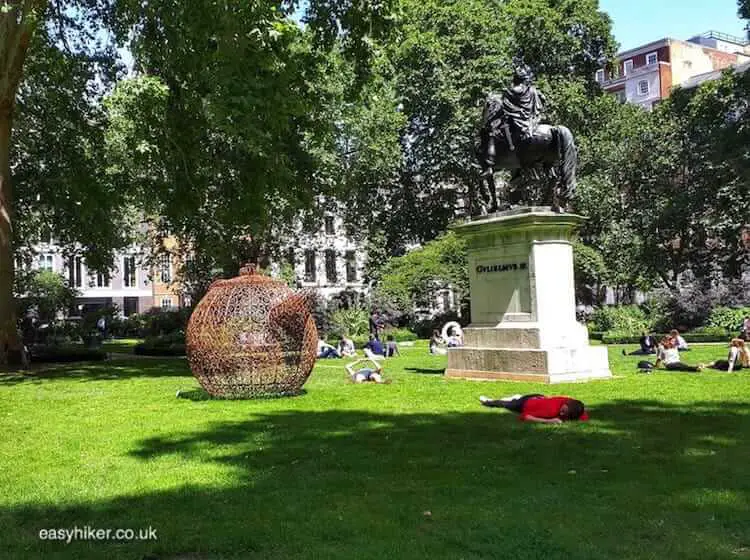Here is something you probably did not see coming. After last week’s walk – which took in the moat around the old city walls of Treviso, the town’s scenic canals and the statue of a “nude female torso” that is freely dispensing water from her nipples – you probably thought we had dealt comprehensively with the topic of Treviso water.
But what do you know? You were wrong – and here is more! Although to find more water in Treviso, we have to leave the town and go a little further afield.

Accompanying the Silent Flow of the River Sile
There are three kinds of river in the Veneto region: first there are the rivers that come down from the Alps, second there are the so-called distributaries (which branch off a larger river) and finally, there are rivers that suddenly emerge from a spring in the ground.
The Piave, the Veneto’s largest river, is a good example for the first group, the Bottaniga (which branches off the Piave and feeds the Treviso canals) an example for the second.
Treviso’s main river, the Sile, …

… is the best possible example for a river from the third category, since it does not come from one single but from many different such small fontanassi or “resurgence springs”.
It is, in fact, the river with the largest number of such parent springs in the whole of Europe. Although most of that activity has already been completed when the Sile silently winds its way south of Treviso on its way to the Venetian lagoon.

For today’s walk to accompany the silent flow of the River Sile, we will move in the opposite direction, starting our hike further downstream near a village called Casier before walking back upstream into town.
Buy yourself a bus ticket at a licensed ticket vendor (such as a tobacconist) and take bus no. 4 – services leave Treviso every 30 minutes from the Piazza Duomo – for a 20-minute ride to a stop called Laghetto Verde, located just behind a large sign on the left hand side of the road that advertises a pizzeria of the same name.
Walk back to that sign and, just underneath it, turn right into Via Tappi. After 200 metres or so, you will reach a small footbridge that you need to cross.
Turn right into the footpath just behind and proceed with the river on your right.

The weather in this part of Italy may surprise you. Summers are warm and largely dry, but for the rest of the year, the Veneto is one of the coolest and wettest regions on the peninsula.
In places like Venice and Padua, it rains about as much as it does in the northwest of England, the European gold standard for sodden skies and perpetual drizzle.
On top of that, this part of the Veneto from Treviso down to Venice is very flat (Treviso has an altitude of 15 metres above sea level, and there are still approx. 30 km until you reach the coast), and all that water needs to go somewhere.
Sometimes, it appears to spread in all directions simultaneously, creating a wetland-like landscape.

After about one kilometer, you will reach another footbridge. We suggest that you make a little detour here, crossing over on yet another bridge on your right hand side …

… to the left bank of the Sile for the Burci boat cemetery.
In a dead arm of the river, the boatmen who worked for a near-by rapeseed oil factory – only its remains have survived on the riverbank – burnt and sunk around twenty traditional transport boats (the so-called burci) in the 1970s as a sign of protest against their employer’s foreclosure. We missed this spot, having learned too late about it. Do not make the same mistake!
In 1991, the Sile was turned into a Nature Park, and all commercial boat traffic on the river was banned. This was a momentous step: the Sile had been navigable from antiquity onwards and had, until the 19th century, served as the main highway for the goods traffic between Venice and its rich agricultural hinterland.
Only small non-motorised pleasure boats are nowadays allowed on the Sile, and even that type of traffic is restricted to certain stretches of the river.

Behind the locks – when you have to cross over to the left bank – begins the most peaceful and calm stretch of the trail.

The closer you come to Treviso, however, the busier it gets. You will come across buildings where industrial goods were once stored …

… or produced when the Sile was still the region’s main commercial hub.

Finally, you will arrive at the ancient Porto di Fiera, a commercial facility of a far more ancient vintage. Agricultural goods were charged and discharged here throughout the Middle Ages. (The southern Veneto was known as the “granary of Italy”.)
In fact, much of the trail alongside the Sile was used in these days as the towpath on which roped oxen and horses pulled boats against the current towards the Fiera port.

Fiera used to be an independent small village, but nowadays it is essentially a suburb of Treviso. From here on, the trail becomes very busy, and you will meet not only hikers but also joggers and dog walkers.
This final stretch of the Via Alzaia – the ancient name of the towpath – was also the site of the annual Anthropica Art Festival where, for seven years from 2015 to 2021, urban artists produced murals and installations in an attempt to regenerate this once peripheral and industrial part of town.
Sadly, the future of this festival appears to be uncertain, but the works from those seven years are still on show in a charming outdoor environment.

You will know that you are approaching Treviso’s town centre when you can spot the Castello Fortunato Romano, which was built in the 19th century by a successful property developer after he had been foiled in his attempt to purchase one of the city’s ancient aristocratic palazzi.
If they do not let me buy one of those, he appears to have said to himself, I will build my own – so he bought himself a piece of land and constructed a family residence in the style of a medieval castle.
I think this is a great story – mainly because the aristocratic palazzi have long since been taken into public property, while the Castello Romano is still held by the original owner’s family.
So who had the last laugh?







